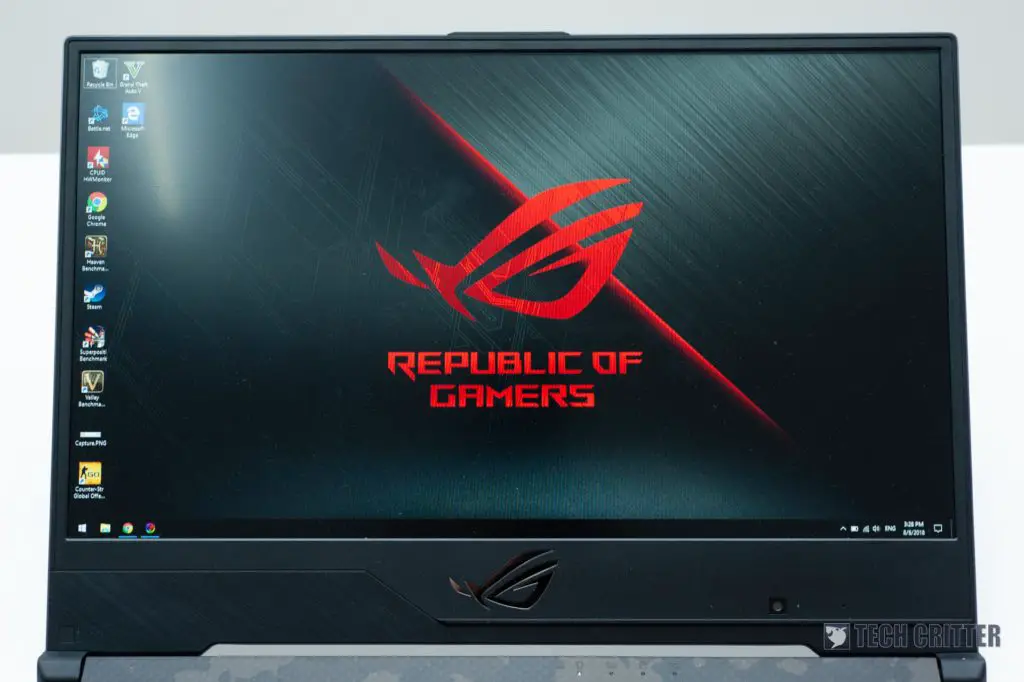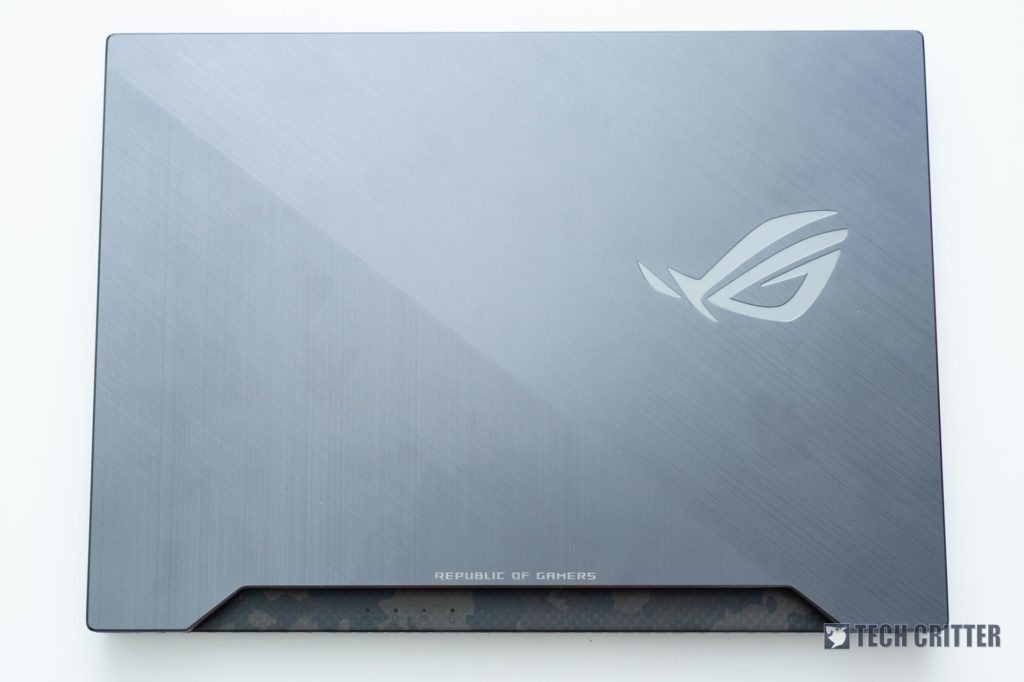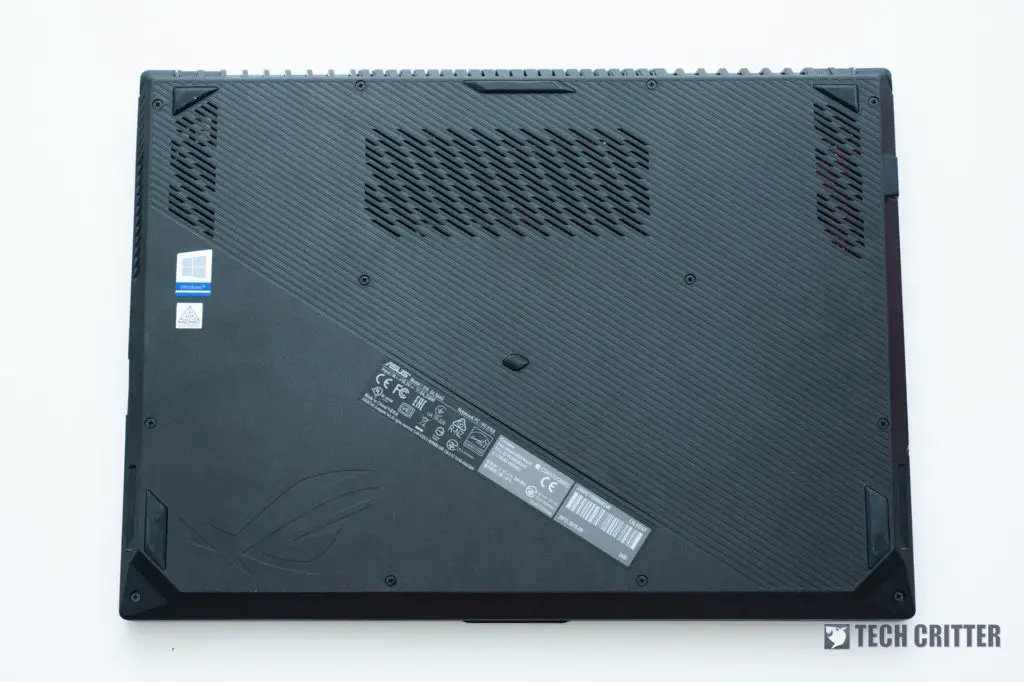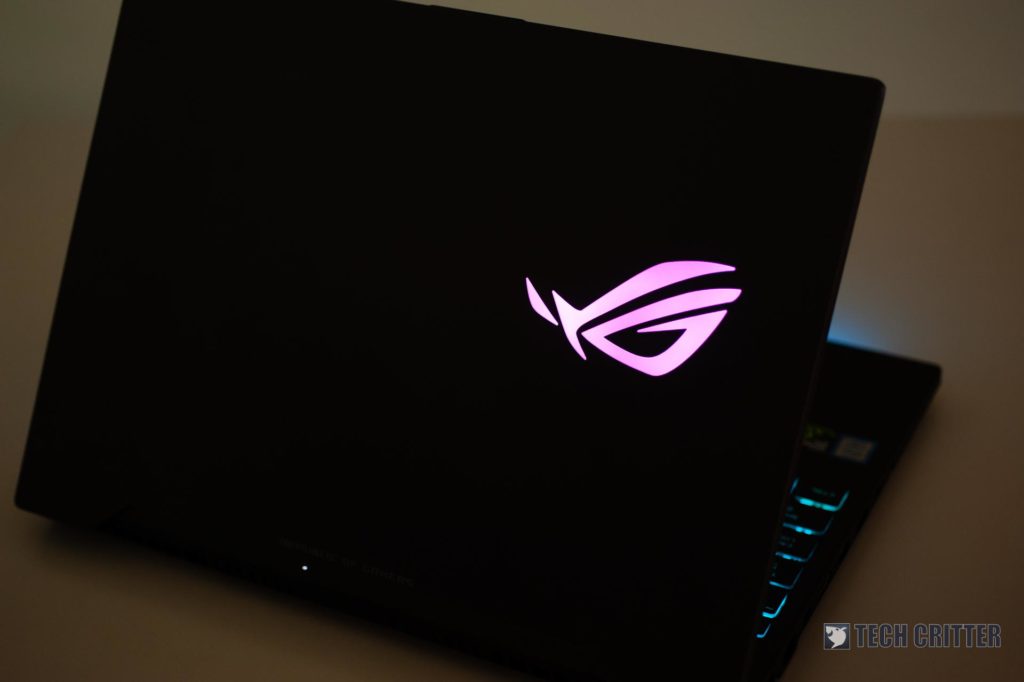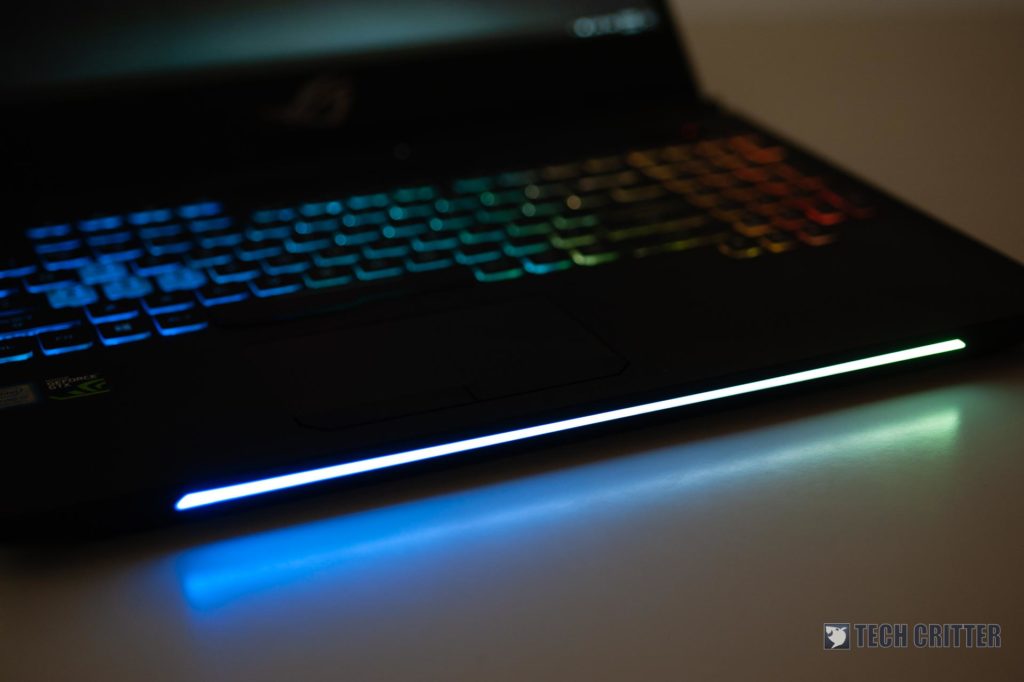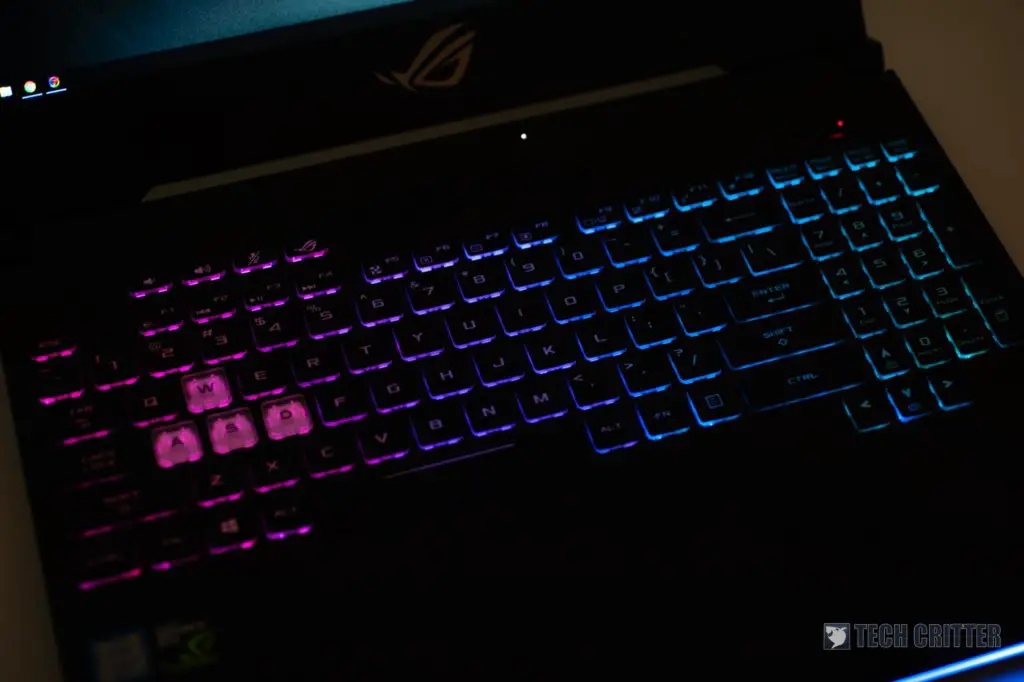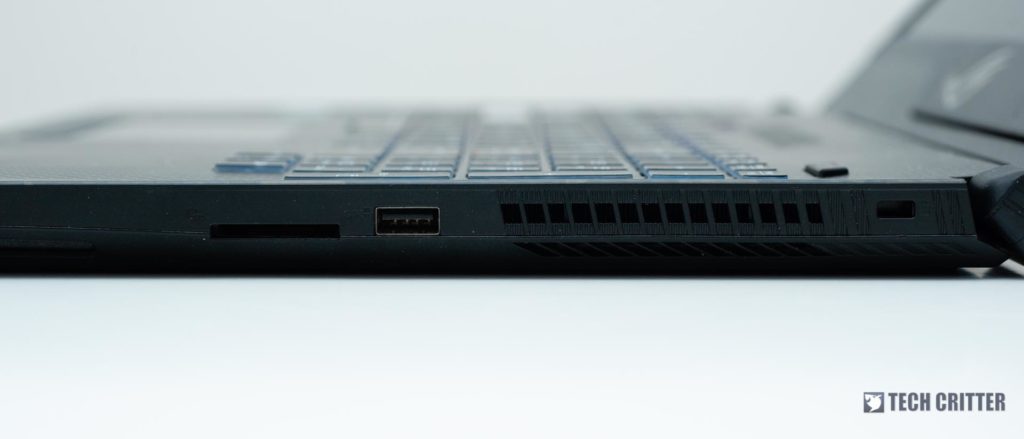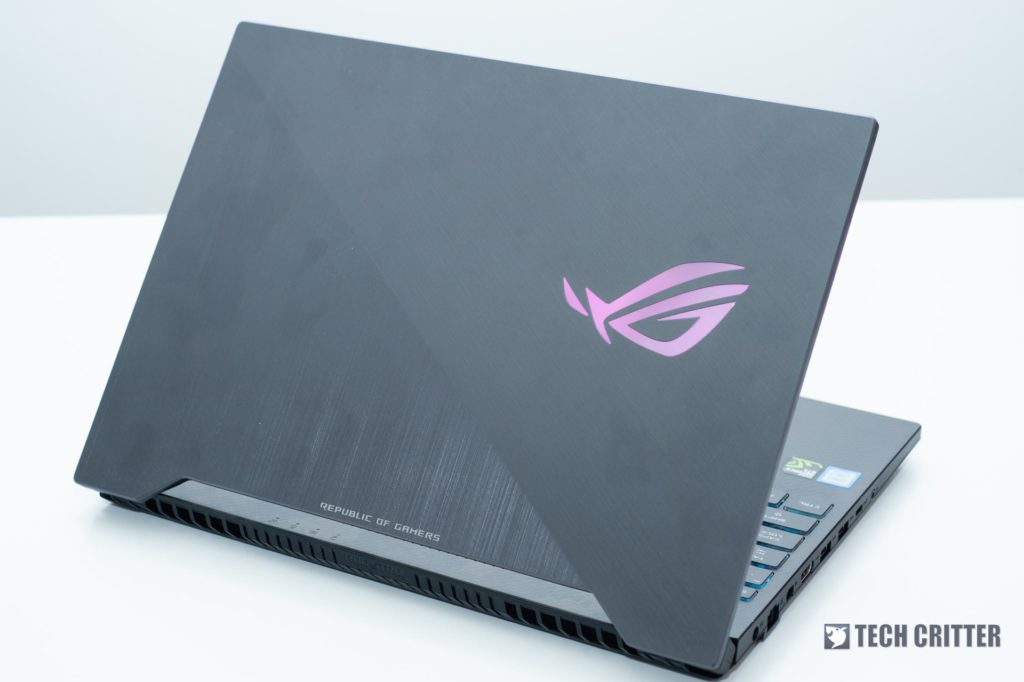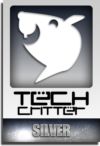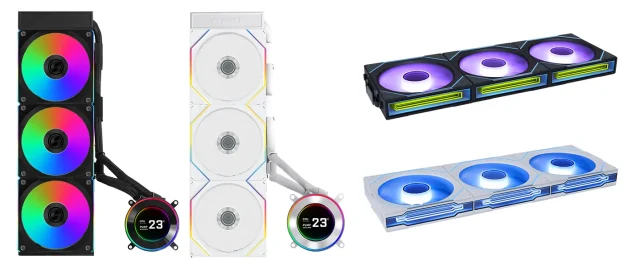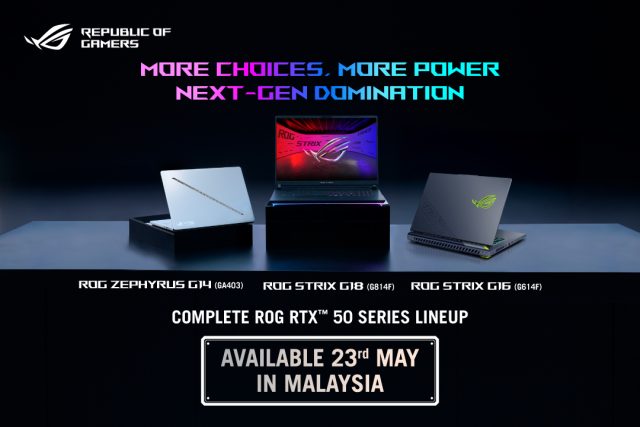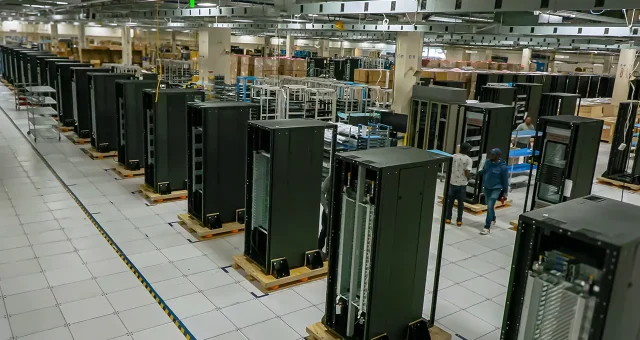The ASUS Republic of Gamers first introduced the ROG Strix SCAR Edition GL503 gaming notebook to meet the expectations of FPS gamers with high-performance internal components and an amazing 144Hz Full HD display with NVIDIA G-Sync technology. One year later, again, at Computex, the Taiwanese company has announced the next iteration of the SCAR edition gaming notebook – the ROG Strix SCAR II GL504. Let’s find out what do I think of the new features found in the SCAR II.
ASUS ROG Strix SCAR II GL504VS
- Intel Core i7-8750H
- NVIDIA GeForce GTX 1070 8 GB GDDR5
- 16 GB 2666 MHz DDR4
- 256 GB M.2 PCIe 3.0 x4 NVMe SSD
1 TB 5400RPM Seagate FireCuda SSHD - 15.6″ FHD (1920 x 1080) IPS, 144 Hz, 3ms, anti-glare
First of all, I have to say that the ROG Strix SCAR and HERO series gaming notebooks are receiving hardware updates way more frequent than what we’re expecting. Less than 3 months after the SCAR I Coffee-Lake CPU refresh, we are now looking at the second generation of the laptop itself which is already shipping to the Malaysian customers.
If we put them into a timeline:
2017 June – SCAR I announcement at Computex
2017 Dec – SCAR I arrives in Malaysia
2018 April – SCAR I receives Coffee-Lake CPU
2018 June – SCAR II announcement at Computex
2018 July – SCAR II arrives in Malaysia
With that being said, let’s have a look at what’s new in this laptop.
The Good
New Display
The most significant update in the SCAR II is the display where it now as 3 ms grey-to-grey response time. Making it the fastest 144 Hz Full HD (1080p) gaming notebook display in the market right now. Now, whether if 3 ms response time is something worth sacrificing the NVIDIA G-Sync is up to gamer’s preferences. After all, it is either choosing from slower response speed (7 ms) or screen tearing.
Apart from that, in terms of the physical display panel, the bezels have been drastically reduced for the top and sides. Pairing it up with a high-quality, bright and colour accurate IPS panel, the gaming experience is undescribable via words unless one experience it with his own eyes.
Smaller Chassis
As the new display now has much slimmer bezels while keeping the same 15.6-inch size, that means the laptop has a smaller footprint compared to the GL503 SCAR. The notebook itself is slightly larger than a regular 14-inch laptop and now I could easily fit it into a bag for 14-inch laptops.
ASUS ROG removed the D-Door feature from the new chassis, stating that the feature has not being used that regularly. We do understand that no one will need to access the RAM and HDD every once a week. Besides, the whole back panel can be opened after removing 12 screws, we’re not going to complain about it since users can also clean the fans while accessing the internal hardware.
More RGB
Rejoice for those who like RGB lighting as the new SCAR II has more RGB lighting capabilities. The ROG logo on the lid can now support ASUS AURA core lighting settings.
Newly introduced is the light bar at the front of the laptop chassis, it is not that bright and obtrusive as what I initially thought.
The keyboard is still the same 4-zone RGB configuration instead of individually backlit. While ASUS has been trying to make the colour transition smoother between the gaps, honestly, I think for a gaming notebook at this price point, they should be able to make them individually backlit.
Better Connectivity
The WiFi module receives an update with the quad-antenna AC WiFi from the previous dual-antenna setup. Apart from that, the Bluetooth module has been upgraded from BT 4.2 to BT 5.0.
There are a few changes in the physical I/O connectivity, for instance, the USB Type-C port has been upgraded from USB 3.1 Gen1 (5 Gbps) to Gen2 (10 Gbps). Unfortunately, it has lost the Thunderbolt 3 support, so we’re not entirely sure whether should we call it an upgrade or downgrade or sidegrade.
As for the USB Type-A, ROG has reduced the amount of port from four to three. GL503 has four USB 3.0 Type-A port, now the GL504 has two USB 3.0 Type-A port and one USB 3.1 Gen2 Type-A port.
Performance
For a laptop at this form factor, I personally still find it difficult to wrap my head around the idea of having a desktop class GTX 1070 GPU stuffed inside. This laptop is way more powerful than my desktop running i5-3470 + GTX 1070.
Gaming performance is excellent with i7-8750H + GTX 1070:
| Game | Avg FPS | CPU Max Temp (C) | GPU Max Temp (C) |
| CS: GO | 166 | 88 | 80 |
| PUBG | 75 | 95 | 84 |
| DOTA 2 | 138 | 87 | 79 |
| Overwatch | 124 | 95 | 83 |
The Bad
Tone down the fan, please
If you recall our review of the GL503 SCAR, we are somehow disappointed with its thermal performance. Even after clarifying with ASUS about the presumably lemon unit, yet it left us with a rather bad experience in regards to its thermal performance.
During the Computex pre-launch event, ASUS spokesperson has told the media that the second generation GL504 would have improved thermal performance. After testing out the laptop, I would say the temperature is indeed kept in check.
There is just one problem – Noise. For some reason, even when we left the laptop idle without having any software running. The laptop’s fan would still be constantly spinning trying to cool down the internals, hence the fan noise is rather annoying.
Need Better Roadmap
So what’s with the big deal for the SCAR II? Presumably, the second generation is launched due to the market peer pressure from the competitors such as MSI with the introduction of their GS65. As someone who had tested various models of ROG gaming laptops, I am very happy to see the new GL504 with such a beautiful design.
The gaming industry is a fast-moving industry and we understand that if you’re left behind, the catch-up game will be a tough one. With that being said, the overly rushed hardware refresh cycle indirectly ruined the whole premium perception of the product. When a customer spends a fortune to get a premium gaming laptop such as the GL503/GL504, imagine telling them that his laptop is now outdated within 3 months of his initial purchase.
GL504 HERO II?
How about the GL504 HERO II, you ask? The original HERO series laptop was initially created to fulfil the requirements of MOBA players who don’t need high refresh rate monitor and affordably priced. This year’s HERO II refresh has totally blurred the line between the SCAR and HERO series. The HERO is no longer the affordable HERO.
| Specs | GL503 HERO (GTX 1050 Ti) | GL504 HERO II (GTX 1060) | GL504 SCAR II (GTX 1060) |
| CPU | Intel Core i7-8750H | ||
| GPU | NVIDIA GeForce GTX 1050 Ti 4GB | NVIDIA GeForce GTX 1060 6G | |
| RAM | 8 GB DDR4 2666 MHz | 16 GB DDR4 2666 MHz | |
| Storage | 128 GB M.2 PCIe 3.0 x4 NVMe SSD 1 TB 5400RPM Seagate FireCuda SSHD | 256 GB M.2 PCIe 3.0 x4 NVMe SSD 1 TB 5400RPM Seagate FireCuda SSHD | |
| Display | 15.6″ FHD (1920 x 1080) TN, 120 Hz, 3ms, anti-glare | 15.6″ FHD (1920 x 1080) IPS, 144 Hz, 3ms, anti-glare | |
| Price | RM 4799 | RM 6299 | RM 6799 |
Does the extra 8 GB RAM worth the additional RM 500?
Zephyrus M?
Besides, the pricing for the GL504 SCAR II is RM 8499 for the GTX 1070 variant. If you were to compare it to the first generation SCAR, it is RM900 cheaper and seems like a great deal. However, I must point out that the Zephyrus-M with GTX 1070 GPU is officially selling at RM 8770, that’s just RM 271 extra and you’ll get a much premium built gaming laptop and the 144 Hz 3 ms display supports NVIDIA G-Sync.
| Specs | GM501 Zephyrus-M (GTX 1070) | GL504 SCAR II (GTX 1070) |
| CPU | Intel Core i7-8750H | |
| GPU | NVIDIA GeForce GTX 1070 8G Max-P | NVIDIA GeForce GTX 1070 8G |
| RAM | 16 GB DDR4 2666 MHz | |
| Storage | 256 GB M.2 PCIe 3.0 x4 NVMe SSD 1 TB 5400RPM Seagate FireCuda SSHD | |
| Display | 15.6″ FHD (1920 x 1080) IPS, 144 Hz, 3ms, anti-glare, NVIDIA G-Sync | 15.6″ FHD (1920 x 1080) IPS, 144 Hz, 3ms, anti-glare |
| Price | RM 8770 | RM 8499 |
Frankly speaking, this is cannibalism.
Verdict
The new ASUS ROG Strix GL504 SCAR II has a modern design and excellent performance to match the gamer’s requirements. We particularly like the ultra-slim bezel design which makes the laptop with 15.6″ display looks like any other laptops with 14″ display.
The problem, however, lies in their pricing strategy, at RM 6799 (GTX1060) and RM 8499 (GTX1070), they are having conflict even among ROG’s own offering.
Pros:
- Smaller form factor
- Classy RGB lighting
- Ultra-slim display bezels
- Smooth and responsive display (144 Hz 3 ms)
Cons:
- Noisy fan
- Poor battery life
- Bad pricing strategy


